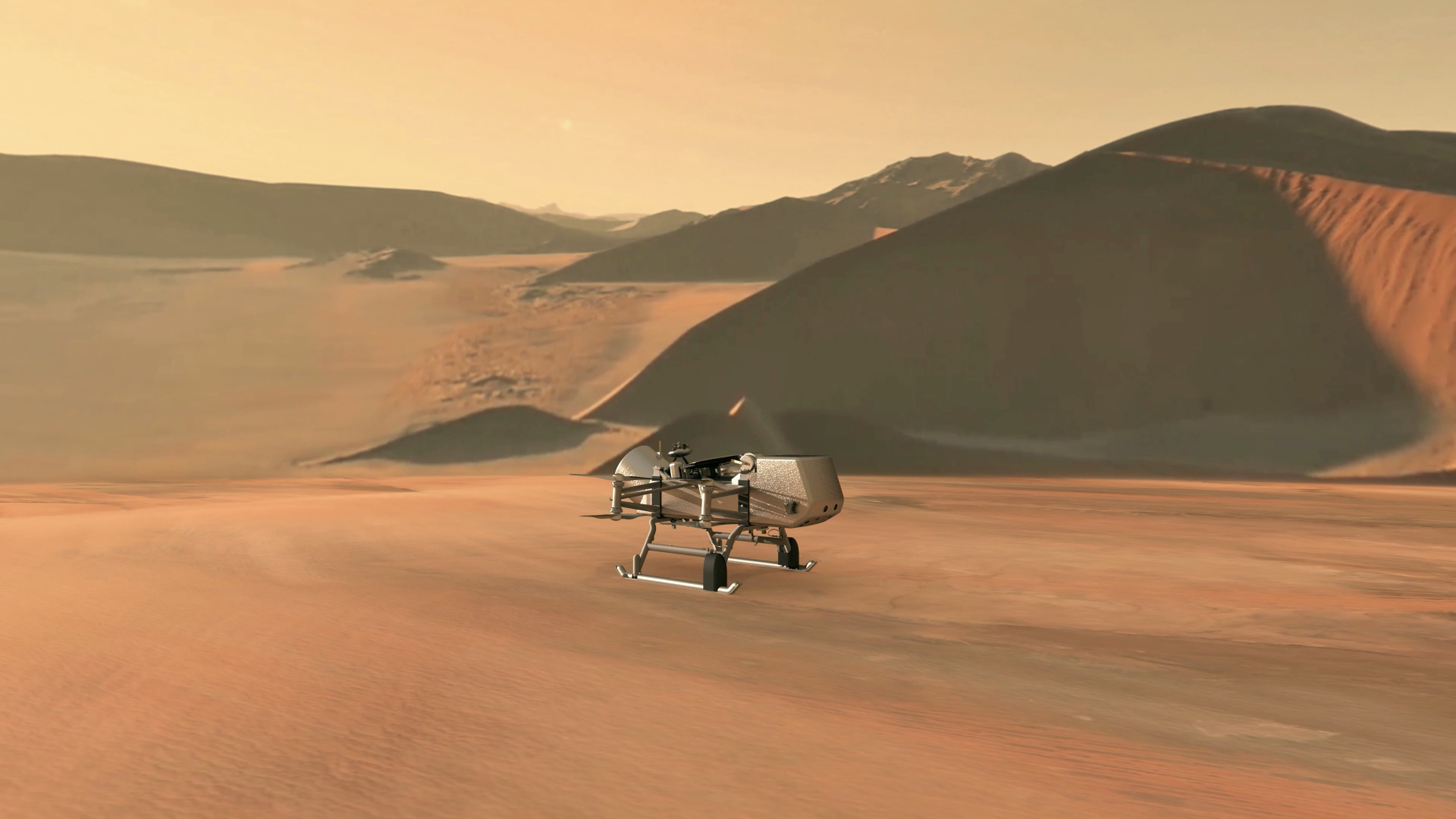Stay Up to Date
Submit your email address to receive the latest industry and Aerospace America news.
Our moon is not the only one on NASA’s collective mind. The agency plans to send a robotic probe to explore a more distant moon: Titan.
The space agency announced Thursday it is moving forward under its New Frontiers series with the development of an ambitious rotorcraft design called Dragonfly that will explore Saturn’s largest moon, whose atmosphere and ocean may resemble conditions on early Earth.
Dragonfly was proposed by a team at the Johns Hopkins Applied Physics Lab in Maryland and will be launched in 2026 for arrival at Titan in 2034. The 3-meter-long, dual quadcopter will leapfrog up to 8 kilometers from one landing site to the next, where it will drill up samples for on-site analysis and also gather data with a meteorology package and seismic sensor.
NASA initially had concerns about technical risks with the Dragonfly concept. “The science was so compelling that we looked at all the risks that were there — and there were quite a number of them — and we just basically said we want to give them a chance,” said Thomas Zurbuchen, NASA associate administrator for science, in a Thursday call with reporters.
Dragonfly’s proposed sample collector, called the “sample-delivery system,” was an early concern, said planetary scientist Curt Niebur, the New Frontiers lead program scientist at NASA headquarters. The craft will have drills on each side of its two landing skids to cut into Titan’s surface, and suction tubes to transfer the hydrocarbon-rich material inside the craft, much like a vacuum cleaner.
“Usually, when we have a NASA mission, we are struggling to find trace amounts of these things, and Titan has so many that the concern was raised that that vacuum cleaner system that sucks up the sample and delivers it to the instrument could get clogged or contaminated,” Niebur said.
Zurbuchen said that problem and others were “eliminated” during a preliminary study of Dragonfly, conducted over the last year and a half.
Elizabeth “Zibi” Turtle, the principal investigator for Dragonfly at APL, said because Titan has only one-seventh of Earth’s gravity, flying is the easiest way for Dragonfly to get around.
“It’s the best way to travel, and the best way to go long distances so we can make measurements in a variety of different geologic environments,” she said during a NASA Science Live broadcast following the announcement. “That’s what we want to be able to do: to understand how the materials on the surface have interacted in different ways.”
Dragonfly was one of two finalists for the fourth New Frontiers mission; the other was the Comet Astrobiology Exploration Sample Return, or CAESAR, which would have brought back samples from the comet 67P/Churyumov–Gerasimenko. Previous New Frontiers missions have sent spacecraft to Pluto, Jupiter and the near-Earth asteroid Bennu.
About cat hofacker
Cat helps guide our coverage and keeps production of the print magazine on schedule. She became associate editor in 2021 after two years as our staff reporter. Cat joined us in 2019 after covering the 2018 congressional midterm elections as an intern for USA Today.
Related Posts
Stay Up to Date
Submit your email address to receive the latest industry and Aerospace America news.




